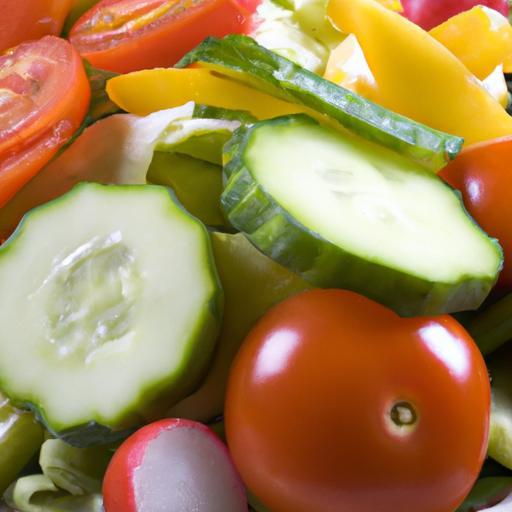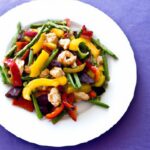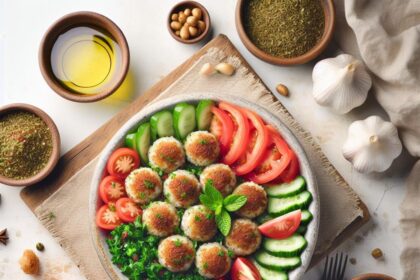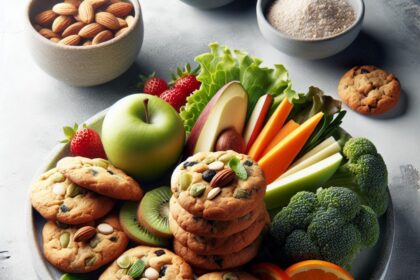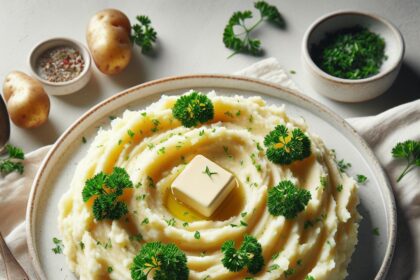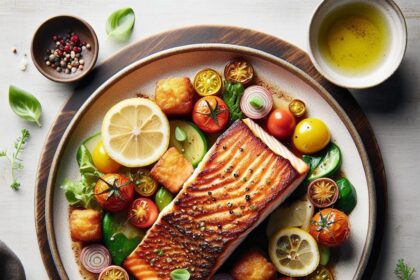In the bustling rhythm of modern life, meal prepping has become a culinary superpower-saving time, reducing waste, and keeping dinners stress-free. But even the most beautifully chopped carrots or perfectly sliced bell peppers can lose their charm (and crunch) if not stored properly. Enter the art and science of veggie preservation: a blend of clever tricks and simple hacks that transform your prepped produce from sad and soggy to fresh and fabulous. In this article, we’ll unlock genius tips for storing prepped veggies right, ensuring your fridge is a vibrant garden of crispness, ready to fuel your meals whenever hunger strikes. Get ready to keep fresh and savor the crunch!
Choosing the Perfect Containers to Maximize Freshness
Keep Fresh: Genius Tips for Storing Prepped Veggies Right start with selecting containers that create the ideal environment for your produce. Opt for airtight glass containers with adjustable vents or BPA-free plastic bins designed for vegetable storage. These containers reduce oxygen exposure, slowing spoilage and keeping your veggies crisp longer. For leafy greens, containers with built-in humidity controls work wonders, allowing you to tweak moisture levels and avoid limp leaves or soggy stems.
Mastering the Art of Moisture Control for Crispy Veggies
Moisture is a double-edged sword when storing prepped veggies. Too much, and your crisp carrots or broccoli florets turn mushy; too little, and delicate greens wilt prematurely. Layer a clean, dry paper towel at the bottom or top of the container to absorb excess water. Alternatively, for heartier vegetables like cucumbers or bell peppers, a lightly dampened cloth keeps them hydrated without becoming wet. Experiment with these moisture control techniques to find the sweet spot that best preserves your favorite vegetables’ texture and crunch.
Ideal Temperature Zones for Different Vegetable Varieties
Not all vegetables thrive at the same temperature. Keep Fresh: Genius Tips for Storing Prepped Veggies Right highlights that root vegetables such as carrots and beets prefer cooler conditions of about 32°F to 40°F, usually the bottom crisper drawer of your refrigerator. Conversely, tropical veggies like tomatoes or peppers do better slightly warmer, often on a middle shelf. Herbs benefit from wrapping in a damp paper towel stored inside a perforated container in the fridge’s warmer drawer. Understanding and adjusting to these specific temperature preferences will extend your veggies’ freshness significantly.
Smart Labeling and Rotation Strategies to Prevent Waste
Nothing beats good organization for reducing food waste. Use waterproof labels or erasable markers to mark prep dates and contents on your containers. Place the most recently prepped veggies behind older items to encourage a first-in, first-out system. A simple “Veggie Calendar” on your refrigerator or pantry door helps track harvest times and spoilage dates visually. These strategies keep your kitchen efficient, prevent forgotten veggies from spoiling, and ensure every bite counts.

Prep and Cook Time
- Prep Time: 15 minutes
- Cook Time: 0 minutes (prep and storage-focused)
Yield
- Serves 4-6 as a storage guide for prepped vegetables
Difficulty Level
- Easy – organizing and storing prepped veggies requires minimal skills but great attention to detail
Ingredients
- Various fresh vegetables: carrots, bell peppers, broccoli, cucumbers, leafy greens, tomatoes
- Airtight containers: glass or BPA-free plastic with lids
- Paper towels or clean cloths (for moisture control)
- Water, for lightly dampening cloths
- Waterproof labeling stickers or erasable markers
Instructions
- Wash and thoroughly dry all vegetables using a salad spinner or clean towels to prevent excess moisture.
- Trim and prep your veggies into desired sizes-slices, sticks, florets, or whole small pieces.
- Select your container based on the vegetable type. Use vented containers for leafy greens and airtight jars or bins for heartier veggies.
- Place a paper towel or lightly damp cloth inside the container bottom or on top of the vegetables to control moisture without over-wetting.
- Layer prepped vegetables gently inside the container, avoiding overcrowding which can speed decay.
- Seal your container tightly and label with the date and contents using waterproof markers or labels.
- Store vegetables in the fridge zones appropriate for each type-roots low and cold; leafy greens in crisper drawer with humidity control; warm-tolerant such as tomatoes in a less cold spot.
- Check stored veggies every 2-3 days, replace paper towels or cloths as needed and rotate containers to use older prepped veggies first.
Chef’s Notes
- Substitute paper towels with reusable unbleached cloths for a sustainable option.
- Use silicone food savers for cut onions or garlic bulbs to contain strong odors while maintaining freshness.
- If you prefer vacuum-sealed storage, invest in a quality vacuum sealer to extend shelf life dramatically.
- Always dry vegetables immediately after washing; moisture promotes mold growth and off-flavors.
- Prepped vegetables can typically last 4-7 days using these techniques but check regularly for spoilage signs.
Serving Suggestions
Prepped veggies stored using these methods are ideal for quick snack platters, vibrant salads, and easy stir-fries. Garnish carrot sticks with a sprinkle of fresh dill or mint for a refreshing twist. Present broccoli florets with a lemony tahini dip for an elegant appetizer. Serve cucumber slices chilled with a dash of sea salt and chili flakes for an invigorating palate cleanser. These storage tips let you enjoy garden-fresh texture and flavor any time with minimal prep.
| Nutrient | Amount per 100g |
|---|---|
| Calories | 25 kcal |
| Protein | 1.5 g |
| Carbohydrates | 5 g |
| Fat | 0.1 g |
For more advanced storage techniques, check out our Ultimate Guide to Keeping Veggies Fresh. To explore the science behind vegetable preservation, visit the USDA Food Safety and Inspection Service.
Q&A
Q&A: Keep Fresh – Genius Tips for Storing Prepped Veggies Right
Q1: Why is proper storage of prepped veggies so important?
A1: Prepping veggies ahead saves time, but without the right storage, they quickly lose crunch, flavor, and nutrients. Proper storage keeps your veggies vibrant, tasty, and ready to brighten every meal, reducing waste and boosting your kitchen efficiency.
Q2: What’s the magic trick to keeping cut carrots crisp and snappy?
A2: Carrots love a cool, hydrating spa-a container filled with cold water does the trick! Submerge your sliced or baby carrots in water, store them in the fridge, and change the water every couple of days. Your carrots will stay fresh and satisfyingly crunchy for over a week!
Q3: How do I prevent leafy greens from wilting in the fridge?
A3: Treat your leafy greens like royalty. Wrap them gently in a damp paper towel, then place them inside a breathable container or a plastic bag with a few poked holes. This combo keeps moisture balanced-no soggy mess, no shriveled leaves!
Q4: Can I store chopped bell peppers without them losing flavor or color?
A4: Absolutely! Store chopped bell peppers in an airtight container lined with a dry paper towel to soak up excess moisture. Keep them refrigerated, and they’ll retain their vibrant crunch and sweet zing for up to 4 days.
Q5: What’s the best way to store prepped onions to avoid ‘fridge stink’?
A5: Onions are notorious fridge offenders! Keep chopped onions in a sealed glass jar or container with a tight lid to lock in their aroma and preserve freshness. This also prevents onion odor from invading your other food.
Q6: Are there any veggies that shouldn’t be prepped too far in advance?
A6: Yes-cucumbers, tomatoes, and mushrooms tend to lose texture and flavor quickly once cut. It’s best to prep these just a day ahead or right before use to enjoy their full freshness.
Q7: Any insider tips for storing prepped veggies to make meal prep a breeze?
A7: Label your containers with prep dates to keep track of freshness. Also, consider using stackable containers to maximize fridge space and keep everything organized. Rotate veggies to use the oldest first, minimizing waste and keeping your meals vibrant.
Keeping prepped veggies crisp and delicious is a kitchen superpower. With these clever hacks, you can say goodbye to soggy salad and hello to fresh, flavorful bites every time!
Wrapping Up
In the quest to keep your prepped veggies fresh and flavorful, a little know-how goes a long way. By mastering the art of smart storage-whether it’s the perfect container, the ideal temperature, or clever prep tricks-you’ll not only save time and reduce waste but also elevate every meal with crisp, vibrant ingredients. So, next time you chop, slice, and dice, remember these genius tips to unlock the full potential of your veggies, turning your kitchen into a hub of freshness that lasts. Because when your produce stays lively, your dishes shine brighter, and your healthy habits stick around longer. Happy storing!
